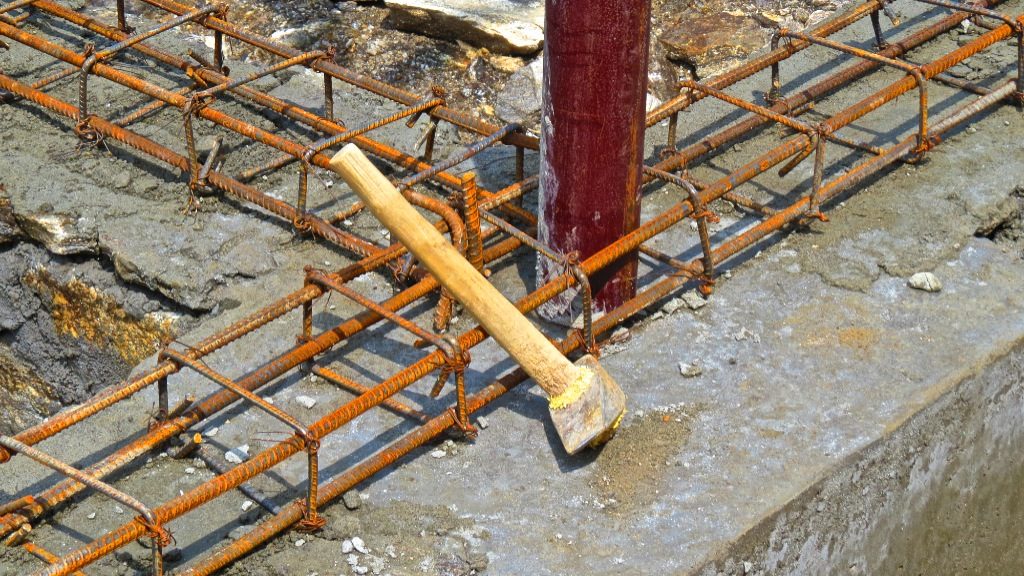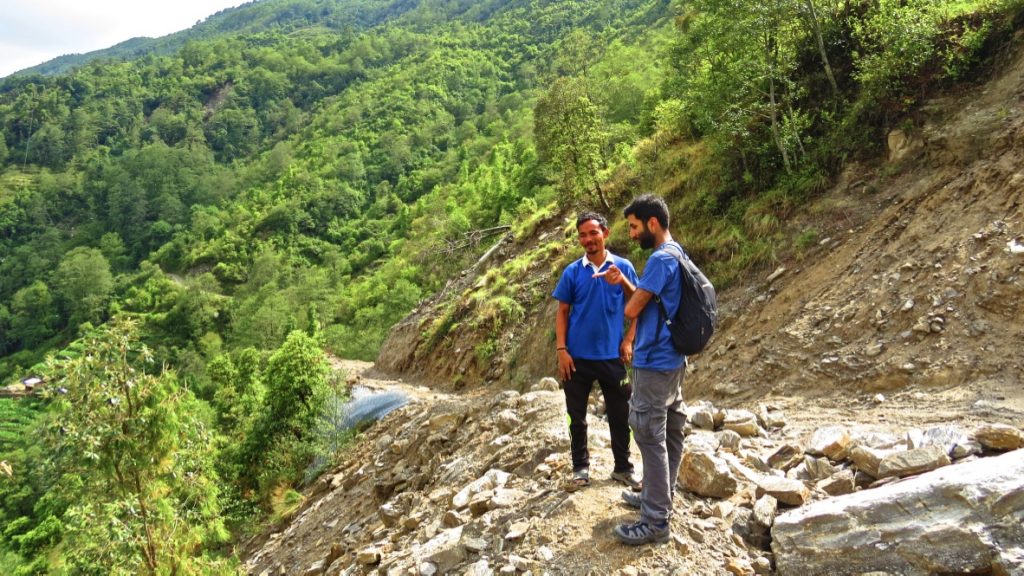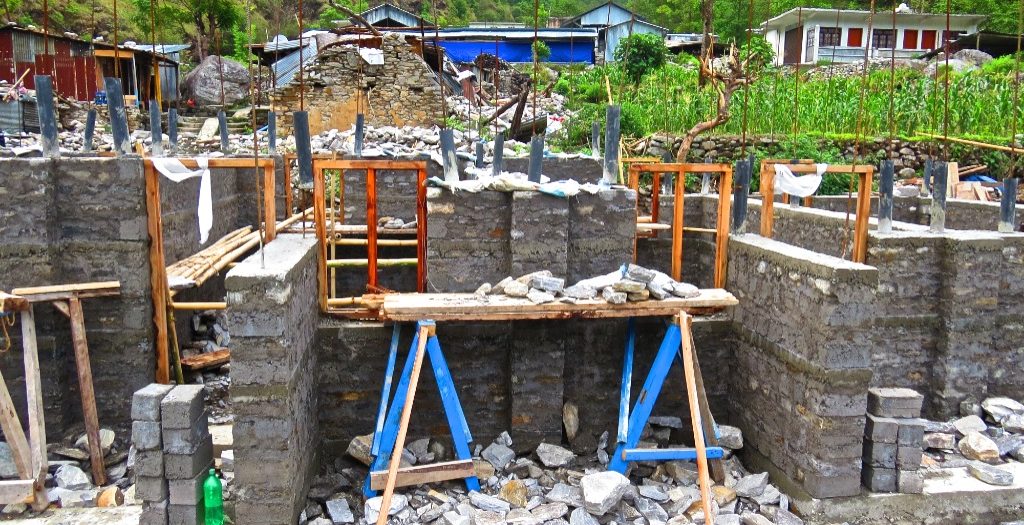Read the next part of Nitish Upadhyaya’s blog from his recent visit to Nepal. If you haven’t read it yet, catch up on Part 1, Part 2, Part 3 and Part 4.
Although I’m approaching the last few days of my visit, we find time to squeeze in another trip to Helambu. It’s a special trip for another reason too – we’re going to take Jasmine, Jimmy’s four-month-old for her first adventure to Helambu. I’m honoured just to be a part of the occasion! We’re joined on the bumpy road by some of Jimmy’s friends from IDS, and off we go.
Arriving at the gateway to the Helambu valley gets me every time without fail. The sheer beauty of the region is hard to describe, and as we approach the river Melamchi which runs through the valley, I can hardly contain my excitement. The morning rains in the valley have cooled the air, and as we begin our ascent, the sun brightens our path.
First stop is a primary school in Tartong village. But first we need the help of some locals to dig out the jeep from a quagmire of mud and water. It isn’t even the proper monsoon season yet and the roads are already difficult to pass. It makes it all the more impressive when we pass a convoy of our trucks who are on their way to deliver building materials to the school.

Tartong is a lovely community and I’ve visited twice on previous trips. Such was the devastation caused by the earthquakes that the whole village had to relocate further up the mountain. And the school was totally destroyed. We spent over a month with a digger excavating about 30ft of boulders, rubble and soil to flatten the land for the new school buildings. Now I’m heartened to see the foundations set and the buildings going up very quickly. We stop to chat to the builders on site, in particular to gauge their thoughts on whether we’ll be done before the monsoon rains come. It is an absolutely gorgeous location for a school – the views are inspiring.
Also find time to chat to a Mondo/HELP funded English teacher who tells me more about the difficulties of teaching in the region and asks for more teacher training. It is something we are working on for the next year – no point having wonderful classrooms if we don’t have motivated and bright teachers.

As rain clouds gather in the distance, we make our way down a steep track to Timbu which is a village at the start of the valley, next to the raging Melamchi river. Apparently, at some point during our descent, there was a tremor – around 4.9 on the richter scale – but we don’t feel it too much because the jeep is already rocking around on the bumpy road!
At Timbu, we are helping to fund a hostel to ensure that students don’t have to walk for hours to reach a secondary school. Having just come down from Tartong, one of the primary schools that feeds Timbu secondary school, I definitely see the necessity for a hostel building! Jimmy walks me through the innovative design – the 2-storey structure will have ample light, a veranda, and space for students to spend their free time. It has kitchen, toilet, shower and dining facilities, on top of being about to accommodate over 60 students.
As we stop for lunch, we hear some bad news – the road to Nakote has been washed clean away in parts and the earlier rains have made it impassable. My face drops. I had really been hoping to re-visit the village in which I taught back in 2010 (having missed out seeing it on my last visit in 2014) but this just means I’ll have to come back! Baby Jasmine’s first Nakote experience will also have to wait.
Our approach to Norbuling school is another adventure altogether. Although the track is potholed and steep, it is generally passable until the heavens open and a torrent of water starts flowing from the top of the hill. I haven’t seen rain like this in a long time, but we brave it all the same to go and see the new hostel building. My camera, however, stays firmly inside. We are soaked through by the time we reach the school and then, of course, the rains stops. Warmed by some chai, I’m delighted to explore yet another building that is coming up fast. The students currently boarding in temporary accommodation are looking forward to moving into new permanent facilities.
As we settle down for the night in a small guesthouse next to the fast flowing river, I have an opportunity to reflect on my trip. Too short but hopefully productive. A chance to finally touch the buildings we have been raising funds for and to see first hand the hope that we have been able to bring to the community. The community-led approach is clearly paying dividends and I’m hoping that we will have handed over many more classrooms before the monsoon rains arrive. And then we begin the process of raising funds for new facilities in more schools!




Comments are closed.